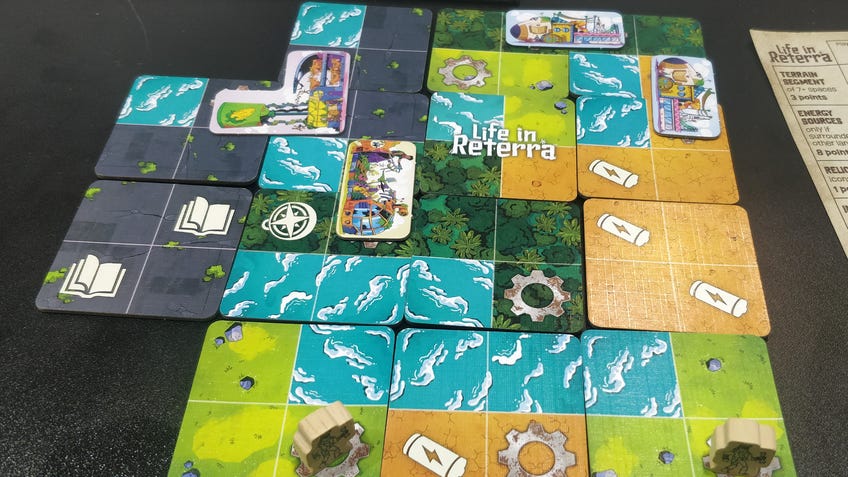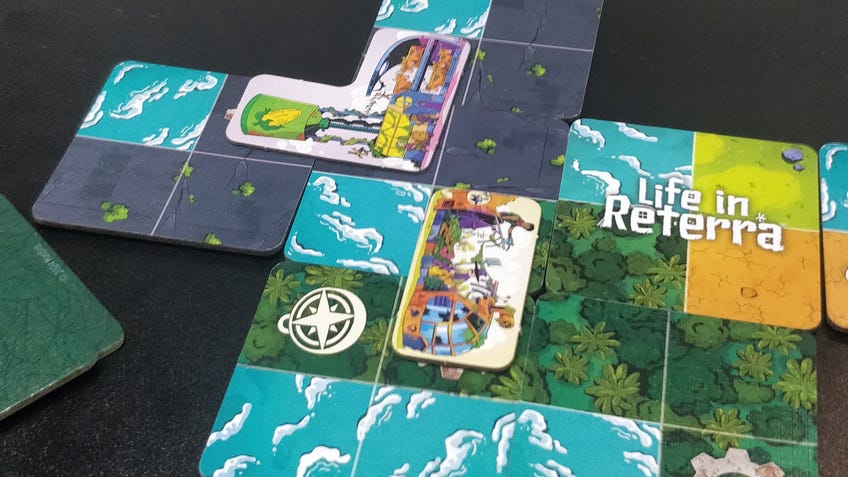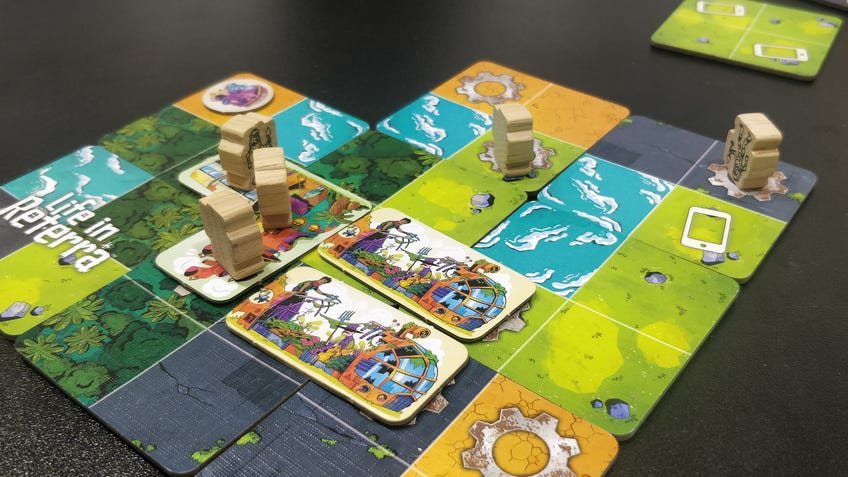Blood Rage creator's next board game Life in Reterra bridges the gap between complex and casual - and we've played it
Is Hasbro courting hobbyists?
Life in Reterra could be the next big board game to bridge the gap between casual and hobbyist tabletop players.
An upcoming board game co-designed by Eric Lang - the creator behind the likes of Blood Rage and Rising Sun - and Ken Gruhl, who is probably best known for co-creating the hectic party game Happy Salmon, Life in Reterra sees players competing to construct the best post-apocalyptic, environmentally-friendly community possible. Dicebreaker got a sneak preview of Life in Reterra during last year’s Essen Spiel convention, wherein we were able to play the game with Lang himself, who was also guiding us through its rules.
Lang and Gruhl reportedly worked alongside the game’s publisher Hasbro to create a title that would still be approachable but offer a more complex experience than the many iterations of Monopoly and Cluedo the company is best recognised for. According to a Hasbro representative, Life in Reterra could mark the start of a new era for Hasbro - in which it moves closer to the hobbyist space it was once more willing to engage with, whilst doing its best to grab the interest of more casual players.

The setting and artwork for Life in Reterra is an excellent example of how the game balances its casual and hobbyist sides. Set around 200 to 300 years in the future, Life in Reterra features the nature themes that a lot of the slightly more mainstream board games have been flirting with - such as birdy board game Wingspan - but mixes them with subtle aspects that allude to deeper worldbuilding.
This is a possible future for humanity in which our current civilisation has finally crashed and burned through overconsumption, only to be reborn in a more environmentally sustainable way from the ashes. It’s easy to appreciate the charming visuals of a school being built within the remains of an aeroplane, but even more interesting to consider how that fits into the wider picture of this newfound community that’s reusing whatever it can to form a functioning society.
The main thing that puts Life in Reterra above the likes of Kingdomino and Carcassonne is the inclusion of building tiles.
Building this society initially has players taking turns to select and place tiles featuring four quadrants, each containing a certain type of terrain - such as water and grassland. Similarly to board games like Kingdomino and Carcassonne, players are able to choose the top tile from a selection of piles before placing it adjacent to another tile in front of them. Players have their own separate communities that will be made up of a four-by-four grid of these tiles, which must be placed next to terrain quadrants that match each other. For example, water spaces have to be placed next to other water spaces.
This means that players will be looking to grab certain tiles in order to fit beside their existing tiles, which - in classic tile-laying fashion - fuels much of the player-vs-player interaction in Life in Reterra, with players praying that the tile they’ve had their eye on all round isn’t taken before they can get their hands on it. Selecting the right tiles at the right time will enable players to form large areas of matching terrain, thereby netting them more points at the end of the game.
The main thing that puts Life in Reterra above the likes of Kingdomino and Carcassonne when it comes to complexity is the inclusion of building tiles. Once players have placed enough of their terrain tiles down, they can start selecting and placing buildings onto those tiles. Putting buildings into your community is another method of scoring points in Life in Reterra, as each one is worth a number of points, with the different building types offering a variety of benefits to players - as long as they’re able to fulfil the requirements.
Buildings are also a limited resource in Life in Reterra, with a first-come-first serve system that puts the pressure on players.
Some buildings will offer additional points if their stipulations are met, such as the garden, which gives three extra points if placed onto a continuous run of at least seven tiles with matching terrain. Meanwhile, others will grant abilities, such as the Inn - which allows you to place an inhabitant on a tile adjacent to it at the end of every turn, with inhabitants being another way of gaining points in Life in Reterra.

Placing these buildings requires players to have the right amount of gear symbols within their communities, which are randomly spread out between the various tiles in the game. This means that not only will players be fighting over certain tiles for their terrain layouts but also for the number of gear symbols they have. Buildings are also a limited resource in Life in Reterra, with a first-come-first-serve system that puts the pressure on players to step up and grab the ones they want whilst they’re still available.
Not getting certain buildings can even be a direct detriment, such as the farm: which enables you to put a junk token onto a neighbour’s tile featuring relic every time you place a building. Whereas relics gain you points if left in your community at the end of the game, junk will lose you points, meaning that putting a farm onto one of your tiles will turn neighbours’ points into losses.
Whether you’re getting that last tile you need to make your community qualify for that building you really want, or cursing the name of another player for taking the tile you really needed - all of these gameplay aspects come together to form a board game that produces just enough competition to keep things interesting, whilst still remaining friendly to newer players who might otherwise shy away from more ruthless experiences. Life in Reterra knows how to utilise and uplift simpler tile-laying games like Carcassonne and Kingdomino into something familiar but new.

